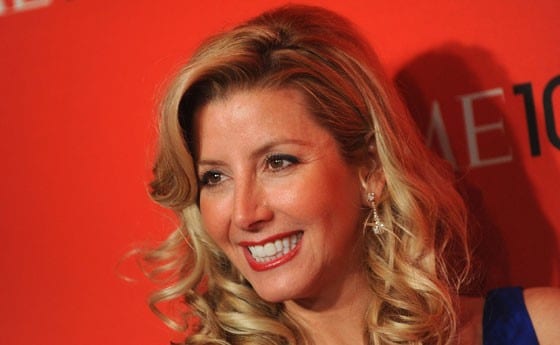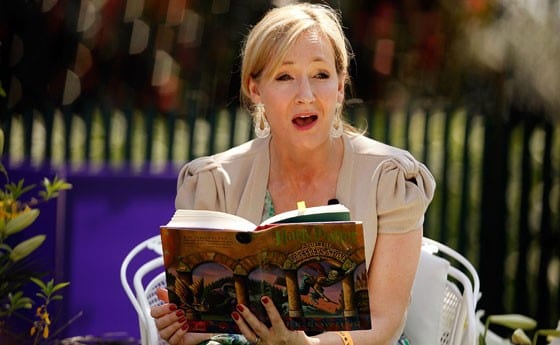A major failure is something we will all inevitably face at some point in our career — and sometimes more than once.
There’s no doubt that the feeling of failing, or the experience of rejection, can be devastating. In a world that values material success and accomplishments, significant setbacks can be incredibly demoralising.
But it’s how we choose to embrace the experiences, how we take on board the feedback, and the lessons we learn, that will help determine a subsequent path to accomplishment.
Failure has been a guiding point for a number of the world’s richest women who experienced substantial knock-backs before they found their success, and who prove that there is actually great value in failing.
Check out our list of highly successful women who failed before they succeeded and find out what they learned from starting over again.

Before becoming a successful entrepreneur at the age of 29 when she created the body-shape brand Spanx, Sara Blakely worked at Disneyland and as a door-to-door fax machine salesperson. She is now the world’s youngest self-made female billionaire, and says she owes much of her success to her father’s guidance in teaching her the power of failing big.
Blakely, who had originally hoped to be a trial attorney before failing the LSAT, says that each day her father would ask, “So, what did you fail at today?” If there were no failures, she says, her father would be disappointed.
A focus on failing big allowed her to understand that failure is not the final outcome.
“I think failure is nothing more than life’s way of nudging you that you are off course. My attitude to failure is not attached to outcome, but in not trying. It is liberating. Most people attach failure to something not working out or how people perceive you. This way, it is about answering to yourself.

Oprah Winfery has an estimated net worth of $2.9 billion, but her success didn’t happen straight away. Her first “big break” came about when she was fired from her first television job as a news anchor in Baltimore, after execs told her she was too emotionally involved in the stories she reported. She went on to become the most successful talk show host in the world, and much of her success came from her ability to connect with her audience and interview subjects.
When Oprah decided to end her 25-year run hosting her own show in order to launch her own television network in 2011, she faced more setbacks. In the first year of the network’s launch, viewership continued to decline drastically. She later revealed that her usually unbreakable self-confidence declined and she fought a bout of depression during this period.
After eighteen months of executive changes — including Oprah becoming CEO, and a string of high-profile interviews — OWN finally started its uphill climb. The initial failure of the network allowed her to step back and re-examine the direction the network needed to take in order to rebound.
“Failure is a stepping stone to greatness…Fall down. The world looks different from the ground.”

Vera Wang is one of the most celebrated fashion designers in the world, but her success only came after a number of career false starts. At 19, her athletic career came to a halt after she failed to make the US Olympic figure skating team. After realising she couldn’t juggle both a skating career and studying at university, she chose to give up her skating dreams, which she later said was the “biggest disappointment in my life”.
She moved to Paris, where she discovered her love of fashion and found a job working at Vogue, later experiencing further knock backs when she was passed over for the editor-in-chief role of the magazine.
This rejection led Wang to contemplate other career options. At the age of 40 she found that her experience in the fashion industry had equipped her with enough knowledge to branch out on her own and start a business as a wedding dress designer. She went on to launch a career as chairman, CEO and owner of one of the most successful fashion houses, now valued at over $1 billion.
“Don’t be afraid to take time to learn. It’s good to work for other people. I worked for others for 20 years. They paid me to learn.”

She was a single mum, living off welfare after being fired from her job as a secretary at Amnesty International in London — because she spent her time at work writing stories.
She received 12 rejections from publishing houses until an editor at Bloomsbury agreed to publish her book, following advice from his eight-year-old daughter. But the book contract came with the suggestion that the writer get a day job because she had little chance of making money in children’s books.
That book, Harry Potter and the Philosopher’s Stone went on to break records as one of the fastest-selling books in history. The subsequent books in the Harry Potter series have, to date, sold over 450 million copies, with a combined global brand that includes a film series, theme parks, toys and spin-off books worth $16 billion.
Harry Potter author, JK Rowling, went on to become one of the most successful female authors of all time, and certainly the richest.
“Failure meant a stripping away of the inessential. I stopped pretending to myself that I was anything other than I was and began diverting all my energy into finishing the only work that mattered to me.”

Author and founder of Huffington Post, Arianna Huffington, has also dealt with a number of set backs that have forced her to re-examine her career ambitions, and has openly acknowledged that failure can be the stepping stone to success.
Despite her first book being a critical success, her second attempt was rejected by 36 publishers. In 2003, Huffington was unsuccessful in her run an independent in the Californian Gubernatorial Race. However, Huffington, who was able to secure over $1 million in donations for her gubernatorial campaign through online contributions, discovered the power of the internet and went on to co-found the Huffington Post in 2005, a period where there were only a handful new-media competitors. She sold the media company to AOL in 2011 for $315 million and has since published a further 11 books.
“You can recognise very often that out of these projects that may not have succeeded themselves that other successes are built.”


